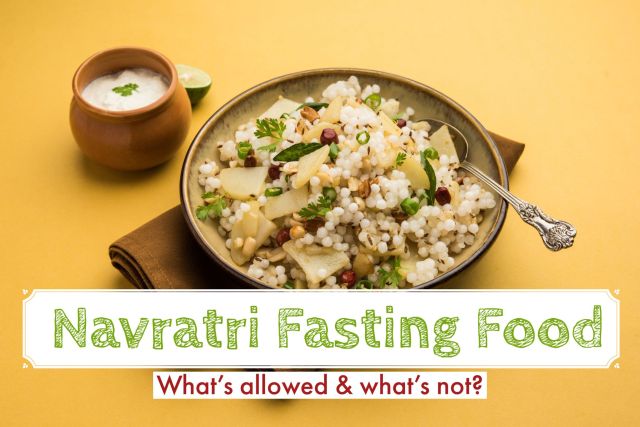Soft, gluten-free, and bursting with flavors – Kuttu Ki Roti can not get easier than this. And what if I tell you that it is made without potatoes? Surprised!!!
This gluten-free buckwheat flour (Kuttu Ka Aata) roti is soft, smooth and has no cracks. These are not only satisfying but also easy to make. You will be surprised to see how it fluffs up on cooking. Let’s quickly dive into the recipe for this timeless Navratri delicacy and learn how to prepare soft and wholesome Kuttu Ki Roti.
What is Kuttu or Buckwheat?
Buckwheat, also known as Kuttu in India, has a long history dating back thousands of years. Native to Central Asia, buckwheat was cultivated in China and later introduced to Europe by the Crusaders in the Middle Ages.
It is a gem of the ingredients for its versatility and impressive nutritional profile. Despite its name, it is not related to wheat. It is not a grain but a seed. Buckwheat flour has been cherished for centuries in various cuisines worldwide, prized for its distinct nutty taste and numerous health benefits.

What are the health benefits of Buckwheat?
Buckwheat is not only delicious but also packed with nutrients. Consuming it regularly contributes to overall health and well-being. Let’s dive into the health benefits of Buckwheat (Kuttu).
- Gluten-Free – It is naturally gluten-free. That is why, it is perfect for those sensitive to gluten.
- Rich in Protein – It is a good source of plant-based protein. It also contains all nine essential amino acids needed for muscle repair and growth.
- High in Fiber – It is rich in dietary fiber and promotes digestive health. It regulates blood sugar levels and helps lower cholesterol levels.
- Nutritious – It contains vitamins and minerals like magnesium, iron, and zinc.
- Good For Heart: It reduces inflammation and improves blood flow. That is how it protects against heart diseases.
What is the Navratri Festival?
Navratri (also known as Navaratri or Navrate), is a joyous Hindu festival. It is celebrated over 9 to 10 days. “Navratri” is a word from the Sanskrit language – Nav means nine and Ratri means night. This festival is celebrated two times a year, once in the spring (Chaitra Navratri) and once in the autumn (Sharad Navratri). Sharad Navratri falls during September or October and is widely celebrated all across India.
One of the main aspects of Navratri is fasting (known as Vrat or Upvas). During fasting, devotees avoid eating some foods, like grains, pulses, onions, garlic, alcohol, and non-vegetarian items. But they eat fasting food items like fruits, nuts, dairy products, etc.

What food items are allowed in Navratri?
Food items that are allowed during the Navratri season are as follows:
- Vegetables like potato, tomato, arbi, cucumber, carrot, bottle gourd, eggplant, pumpkin, etc.
- Fruits
- Dairy Products
- Coconut
- Nuts and Seeds
- Quinoa, Buckwheat, Little Millet (Samai or Samak), Water Chestnut Flour (Singhade Ka Aata).
- Spices like cumin seeds, red chili powder, turmeric powder, cardamom, carom seeds (ajwain), cinnamon, cloves, black pepper, etc.
- Rock Salt
What food items are not allowed in Navratri?
Food items that are not allowed during the Navratri season are as follows:
- Onion and Garlic: They are Tamsik in nature and hence not consumed.
- Lentils and Pulses like moong dal, chana dal, kidney beans, chickpeas, etc.
- Grains and their flours like wheat flour, gram flour (besan), etc.
- Eggs, Non-Vegetarian Food Items like chicken.
- Alcohol (some people avoid smoking too).
- Salt
- Canned Food Items
Everybody has their own beliefs and follows their own rules during the fasting period. That is why, I suggest you adjust the recipes based on how you follow your fasting and celebrate Navratri.
Is this recipe vegan-friendly?
This recipe of Kuttu Ki Roti is vegan because all the ingredients used in this recipe are plant-based.
Ingredients List – for quick reference

Step-By-Step Recipe Instructions



More Navratri Fasting Recipes
- Roasted Makhana
- Makhana Kheer
- Amaranth and Dates Energy Bars
- Quinoa Cutlets
- Kuttu Ka Cheela (Savory Buckwheat Pancakes)
- Sabudana Khichdi
Conclusion
Buckwheat is a highly nutritious and wholesome ingredient. That is why, you need to include it in your regular meals. Because of this recipe, you can replace traditional wheat flour with it in your kitchen. You can add spinach, dill leaves, or other greens to make this recipe more nutritious and tasty. So, make it and surprise yourself with soft and fluffy Kuttu Ki Roti (Buckwheat Flour Tortilla).
If you try this recipe, please share your reviews in the comment section below. Do share a photo on Instagram and tag us @thefearlesscooking. We love seeing your recreation of our recipes.

Happy Cooking. 🙂
Love from us.
Richa













Tell us what you think